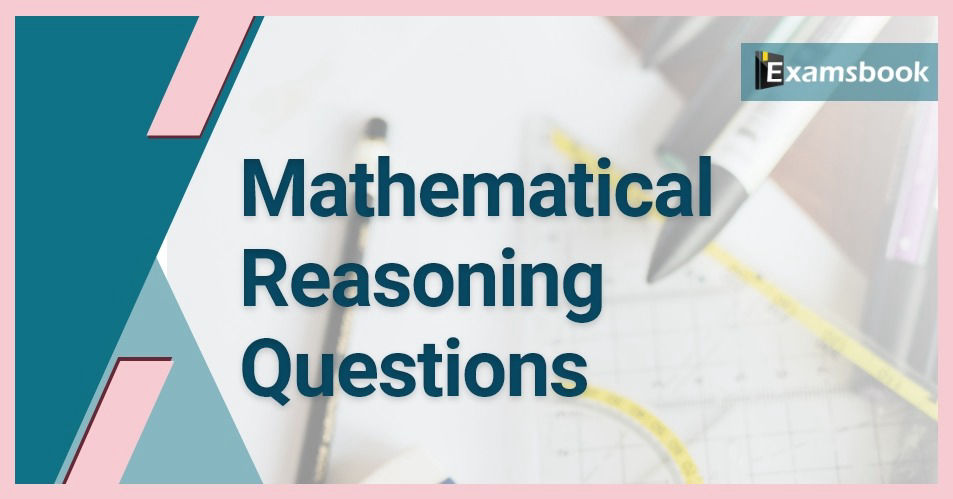


In the given question, the statement is followed by two conclusions. Which of the two conclusions is/are true?
Statement:
Z = E ≥ R > G < Y > Q = F
Conclusions:
I. R < F
II. R ≥ Z
(A) Both conclusions I and II are true
(B) Only conclusion II is true
(C) Only conclusion I is true
(D) Neither conclusion I nor II is true
In this question, two statements I and II have been given. These statements may be independent causes or effects of independent causes or a common cause. One of the statements may be the effect of the other statement. Read both statements and select the correct answer.
I. Since the past three years, State M has reported a sharp and substantial decline in the state’s agricultural produce.
II. In the last five years, there has been an increase in the overall average Rainfall by 6% in State M bringing respite to the farmers.
(A) I is the cause and II is its possible effect
(B) Both I and II are independent causes
(C) II is the cause and I is its possible effect
(D) Both I and II are effects of independent causes
A question is given, followed by two statements numbered (I) and (II). You have to decide whether the data provided in the statements is sufficient to answer the question. Read both the statements and select the appropriate answer.
Question: How many people are standing in the row where all people are facing north?
Statements:
(I) A is fourth from the left end; M is second to the right of A; and R is second from the left end.
(II) M is fourth from the right end; only two people Stand between M and B.
(A) Data in either statement I alone or statement II alone is sufficient to answer the question
(B) Data in statements I and II together is sufficient to answer the question
(C) Data in statement I alone is sufficient to answer the question while data in statement II is not
(D) Data in statement II alone is sufficient to answer the question while data in statement I is not
Directions: A statement is given fo, wed by two inferences I and II. You have to consider the statement to be lane even if it seems to be at variance with commonly known facts. You have to decide which of the given inferences, if any, follow from the given statement.
Statement:
Many students are addicted to mobile games and this leads to poor academic performance.
Inference:
I. Many Students are not paying attention to studies due to mobile games.
II. It is only because of mobile games that students fail the examination.
(A) If only II follows
(B) If neither I nor II follows
(C) If both I and II follow
(D) If only I follows
In this question, the statement is followed by two conclusions. Which of the two conclusion(s) is/are true?
Statement:
Z > F ≥ A = B = G > S < E
Conclusions:
I. Z < A
II. G < F
(A) Only conclusion I is true.
(B) Only conclusion II is true.
(C) Both conclusions I and II are true.
(D) Neither conclusion I nor II is true.
Which of the following symbols should be inserted in place of question mark (?) respectively (in the same order from left to right) in order to complete the given expression in such a manner that ‘U > S’, ‘Q < T’ and ‘S ≤ N’ definitely holds true?
U > T ? D ≥ S ? Q ? N
(A) >, >, <
(B) >, =, <
(C) ≥, =, ≤
(D) >, =, ≤
(E) >, =, ≤
Which of the following symbols should be placed in the blank space in order to complete the given expression in such a manner that ‘X > I’ definitely true?
A = R ≥ I ? T = N ≤ M = X
(A) ≥
(B) =
(C) <
(D) >
(E) ≤
Which of the following symbols should be placed in the blank spaces respectively (in the same order from left to right) in order to complete the given expression in such a manner that “D < A” definitely holds True?
A __ B __ C __ D
(A) >, ≥, <
(B) ≤,
(C) ≥, =, <
(D) ≥, =, >
(E) None of these
Select the correct combination of mathematical signs to sequentially replace the * signs and balance the given equation.
21 * 3 * 36 * 2 * 23 = 68
(A) ÷ − × +
(B) ÷ × + −
(C) + × − ÷
(D) × − ÷ +
If + means −, − means ×, × means ÷, and ÷ means +, what will be the value of the following expression?
5 ÷ 5 + 5 – 10 × 10 = ?
(A) 15
(B) 4
(C) 5
(D) 10
Get the Examsbook Prep App Today